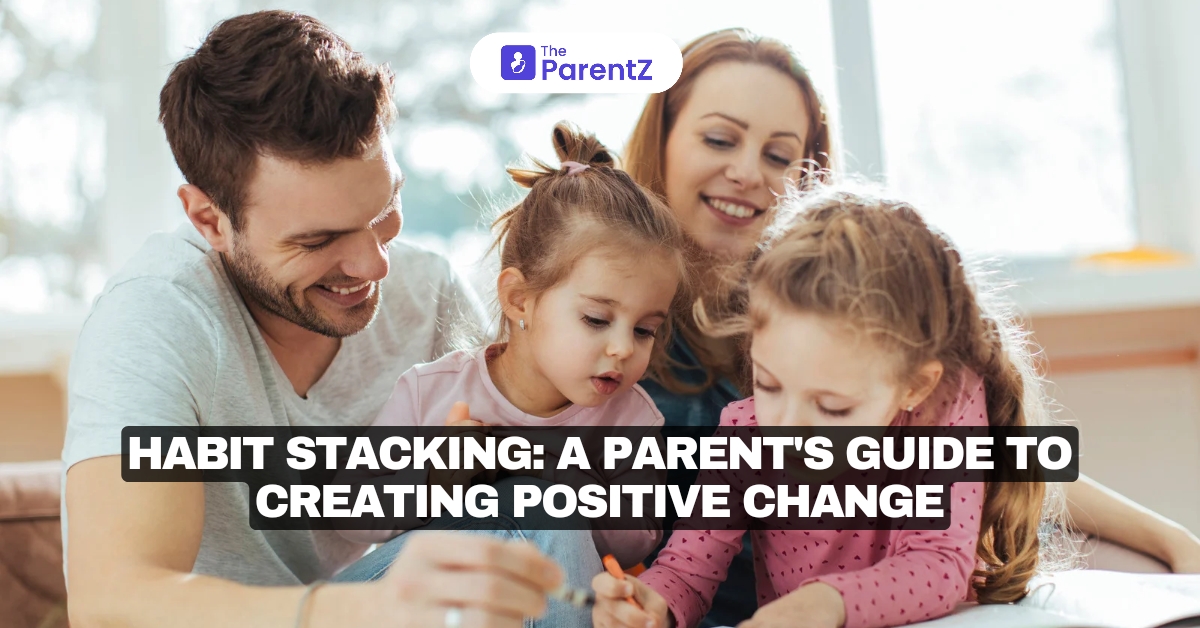As parents, we often find ourselves wrestling with the daunting task of instilling positive habits in our children. From healthy eating to regular exercise, the list of desirable behaviors can seem endless. But how do we navigate the complexities of habit formation, especially when our children seem resistant to change? The answer may lie in a powerful technique known as habit stacking.
It involves connecting a new habit to an existing routine or behavior. By strategically combining small habits, you can create a chain of positive actions that become ingrained in your daily life.
The Psychology Behind Habit Stacking
Habit stacking is grounded in the psychological principles of association and conditioning. When a new behavior is consistently paired with an existing habit, the brain begins to associate the two, making it easier to remember and execute the new habit. This process is known as classical conditioning, where the brain learns to anticipate the new behavior based on the presence of the existing habit.
Moreover, this technique leverages the brain's natural tendency to automate tasks and conserve energy. By linking a new habit to an already established routine, the brain requires less mental effort to perform the combined behaviors, making it more likely that the new habit will stick.
Why Parents Should Give Habit Stacking a Try
Habit stacking offers several advantages for parents seeking to foster positive change in their children:
- It can make habit formation less overwhelming. By breaking down big plans into smaller, manageable steps, parents can help their children feel more empowered and motivated.
- It can increase the likelihood of success. When a new habit is linked to an existing routine, it's less likely to be forgotten or neglected.
- It can create a sense of accomplishment.
As children successfully incorporate new habits into their lives, they'll experience a boost in self-esteem and confidence.
Pros and Cons of Habit Stacking
Pros:
- Increased efficiency: By combining multiple habits into a single routine, parents can save time and energy while accomplishing more.
- Improved consistency: This technique makes it easier to stick to new habits by linking them to existing routines, reducing the likelihood of forgetting or neglecting them.
- Adaptability: It can be customized to fit your children's unique needs and schedules, making it a versatile tool for parents.
Cons:
- Difficulty breaking old habits: If the existing habit is unhealthy or undesirable, it may be challenging to replace it with a new one using this technique.
- Potential for burnout: Stacking too many habits at once may lead to feelings of overwhelm and burnout, especially for parents who are already stretched thin.
- Lack of flexibility: Relying too heavily on this method can make it difficult to adapt to changes in routine or unexpected circumstances.
Children and Habit Stacking
Children are naturally inclined to form habits, as their brains are still developing and highly adaptable. By encouraging children to engage in habit stacking, parents can help them create healthy routines and foster a sense of independence and responsibility.
For example, a child's bedtime routine could include brushing their teeth, putting on pajamas, reading a book, and saying goodnight to family members. By consistently linking these behaviors in the same order, the child's brain will begin to associate the sequence and make it easier to remember and execute.
Conclusion
Habit stacking is a powerful tool for parents looking to optimize their routines and instill healthy habits in their children. By linking new behaviors to existing routines, parents can build a chain of positive actions that become ingrained in their daily lives. While there are some potential drawbacks to consider, its benefits, such as increased efficiency, improved consistency, and adaptability, make it a worthwhile strategy for parents to explore.
By encouraging children to engage in habit stacking as well, parents can help them develop healthy routines and foster a sense of independence and responsibility. Ultimately, it is an understanding approach to habit formation that can benefit both parents and children alike.








Be the first one to comment on this story.